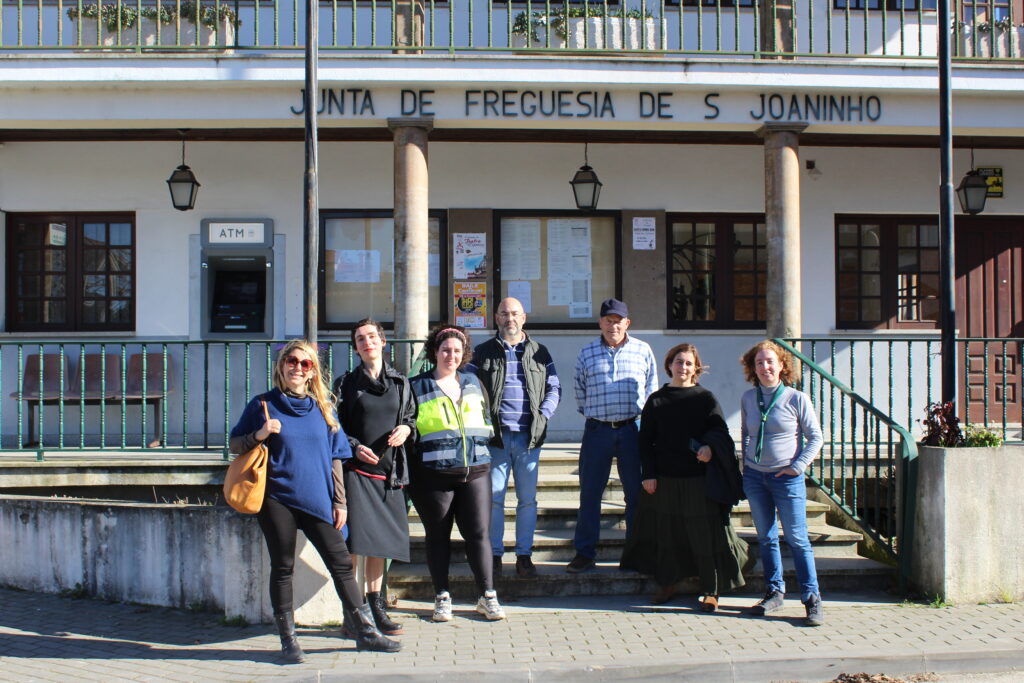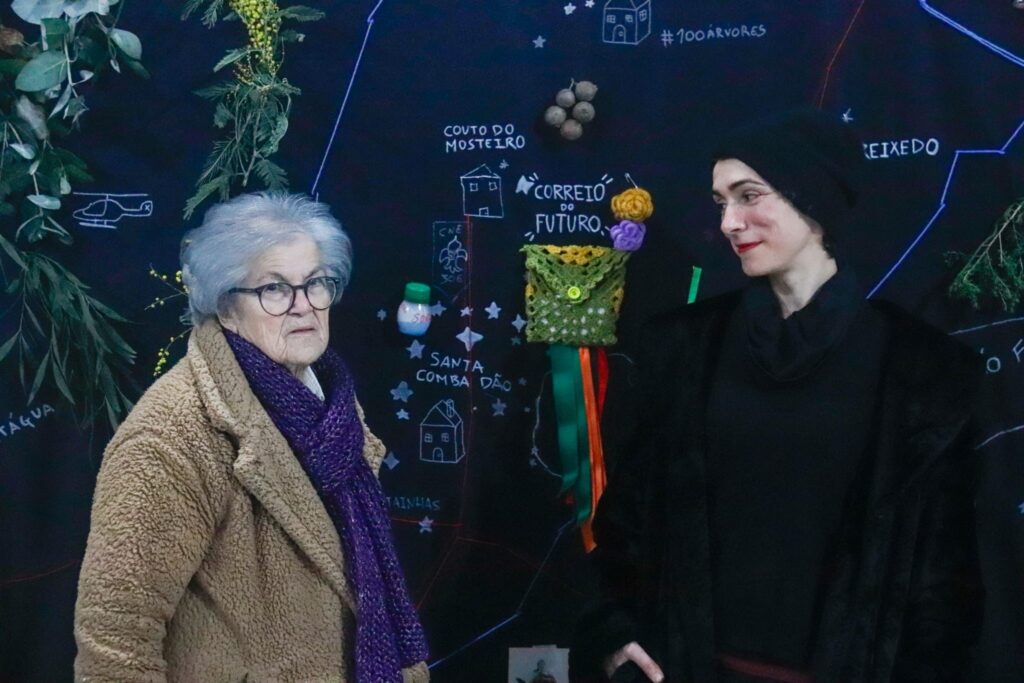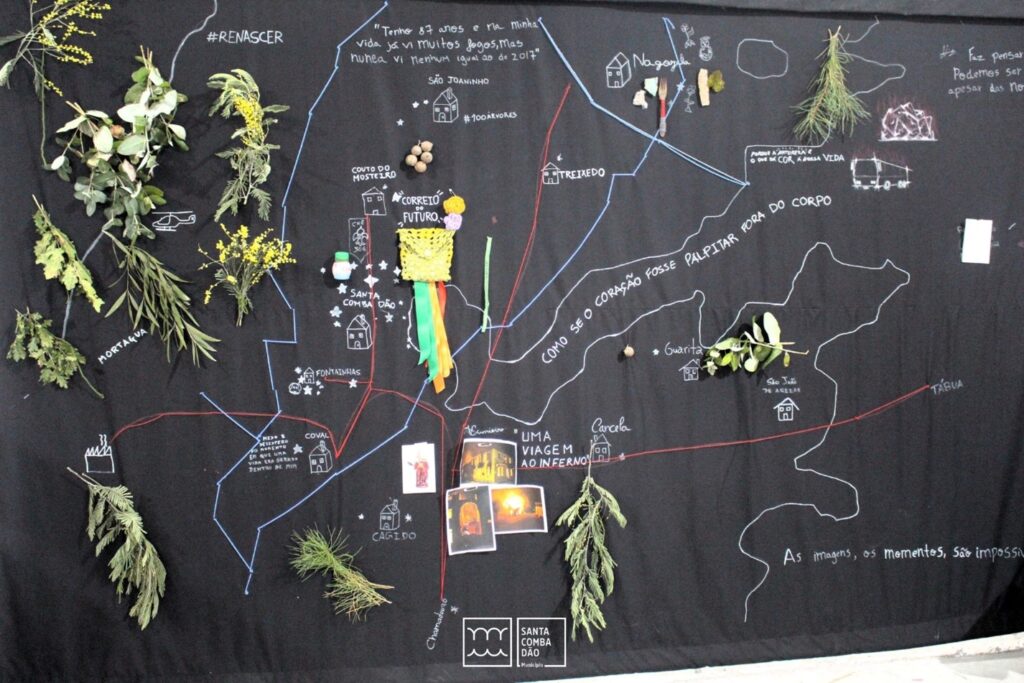Close to the Lousã area within the FIRE-RES Portuguese Living Lab, the Municipality of Santa Comba Dão is tragically famous for being severely affected by the extreme wildfires that ravaged the region in October 2017. With their epicentre in Lousada, the conflagrations led to a total burned area of 296.613 hectares and 51 fatalities, five of which occurred in São Joaninho, a parish of Santa Comba Dão. Today, after seven years, the local community rewrote its history, exploring paths to overcoming loss and pain through artistic and scientific experimentation.
The FIRE-RES team led by CEABN InBIO – Instituto Superior de Agronomia and CoLAB ForestWISE accompanied the bio-artist Margherita Pevere and the researcher activist Céline Charveriat to plunge into the reality of the people of the Município de Santa Comba Dão. There, they met with the local community and listened to those affected by the 2017 wildfire.
Lament is an artistic project that creatively addresses ecological grief from human-induced wildfires and the resulting ecosystem changes. It aims to provide an intimate experience of the losses incurred, offering space for mourning and reflection. Pevere and Charveriat lived for a week at the local firefighter’s headquarters to guide this collective process, exploring the recovery of communities after large-scale disasters to ultimately co-create an artwork generated by collective memories and lessons.
First step: delving into the community experience with visits and research
The journey began on 31 January with a field visit to the sites of the 2017 fire together with the residents to absorb the emotions, sounds, and experiences of the event. The community could count on the constant support of the municipality psychologist Tânia Ricardo and the environmental engineer Sandra Silva. The group met with Mayor Leonel Gouveia and Councilwoman Dr. Carla Cunha and organized an official opening session, joined by around 20 participants including forest owners, citizens, volunteer Firefighters, and the National Republican Guard from Santa Comba Dão. Former and current mayors of many affected parishes joined too, along with the representative of the Intermunicipal Community Viseu Dão Lafões André Mota, the representative of the National body of Santa Comba Dão Scouts Carla Coimbra, and the local High School’s headmaster aiming to involve young locals.

Diving deep into the aftermaths of this tragedy was not only about dealing with a wealth of emotions but also about acknowledging the impressive resilient capacity of a community which reacted to the disaster with collaboration, cohesion and collective understanding. The residents of Santa Comba Dão were taken by surprise when the wildfire unexpectedly reached the center of the village. Many kids were confronted with a sense of helplessness and the inability to provide sufficient assistance to their families, as emerged in the days after the fire when the school was re-opened for them, extending support during this challenging period.
Pevere and Charveriat connected with the community including scouts, arts and humanities students, local business owners and families to collect all memories and lessons. They decided to source materials for the artwork in the local surroundings and businesses and participated in one art class in high school where pupils had the opportunity to anonymously talk about their feelings, facilitated by the psychologist. During their stay, other visits followed to the parishes of São Joaninho, Nagozela, Treixedo, Óvoa, Cagido and Colmeosa to help them prepare for the opening of the canvas of collective resilience.

Second step: assembling an archive of items and emotions between liberation and community building with the canvas of collective resilience
Based on the testimonies gathered, Lament and the local community produced a “Resilient Scars Map”. This hybrid artwork goes far beyond the scope of a geographical map, combining perceived spaces with the evocation of the physical and psychological impacts of the fire, ultimately incorporating messages of hope and lessons for the future. The experience of fire was thus transformed into a large fabric panel, to which everyone could contribute through personal stories, reflections, drawings and objects.
The headquarters of the Bombeiros Voluntários de Santa Comba Dão hosted a final sharing session on 3 February, in which Mayor Leonel Gouveia presented the work to the community, open for public contributions. Some decided to draw their houses and brought photos of several burned buildings. Five crosses were added to the map to represent those who lost their lives in the fire in São Joaninho. The forest was present with samples of native and invasive species pinned to the fabric. A jar of dreams and hopes was also incorporated, and a hand-knitted postbox called “Correio do futuro” with messages for the future was crafted by the 85-year-old local tailor Leonia Rocha. Locals decided to open and read them for the 10th anniversary of the wildfire.
